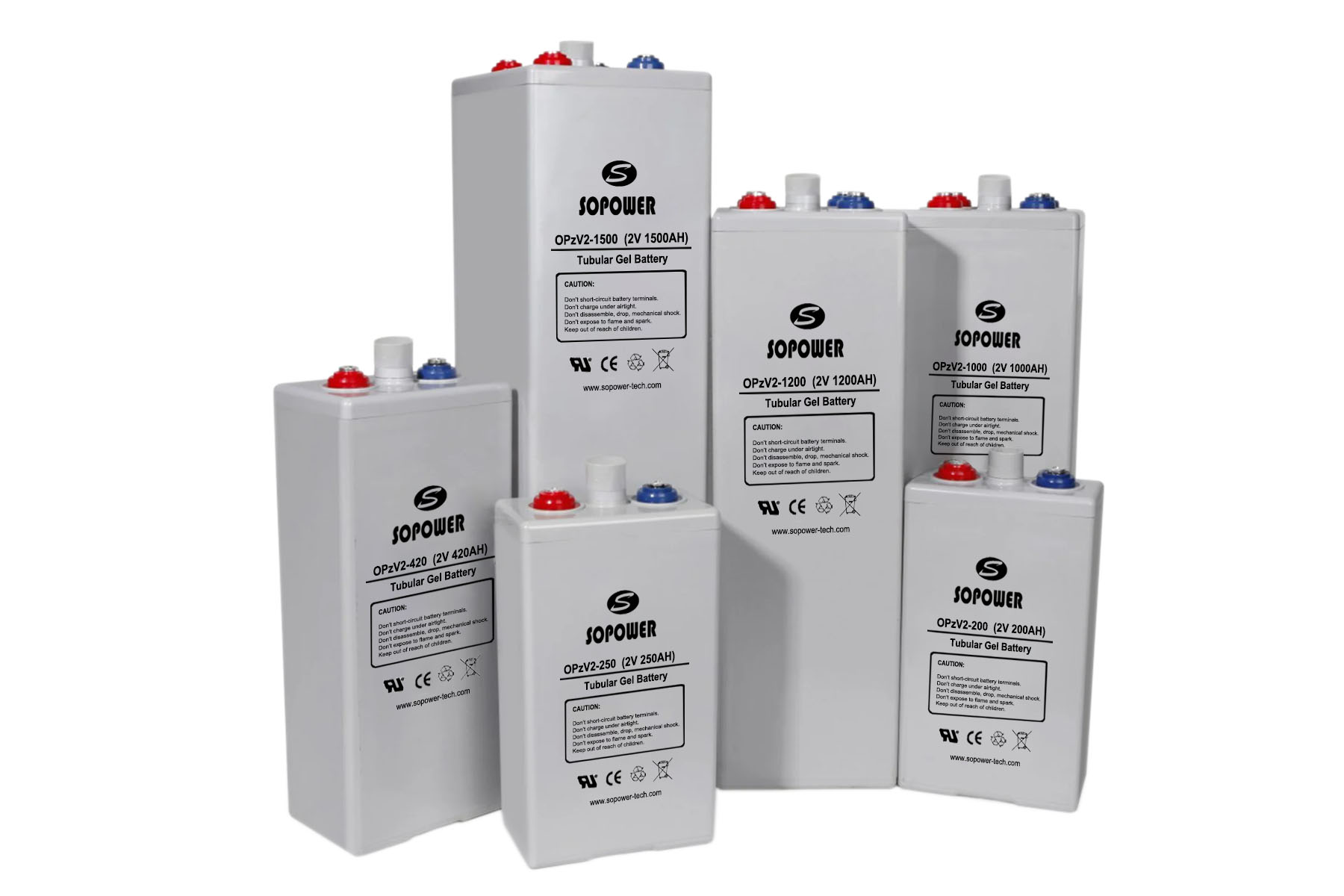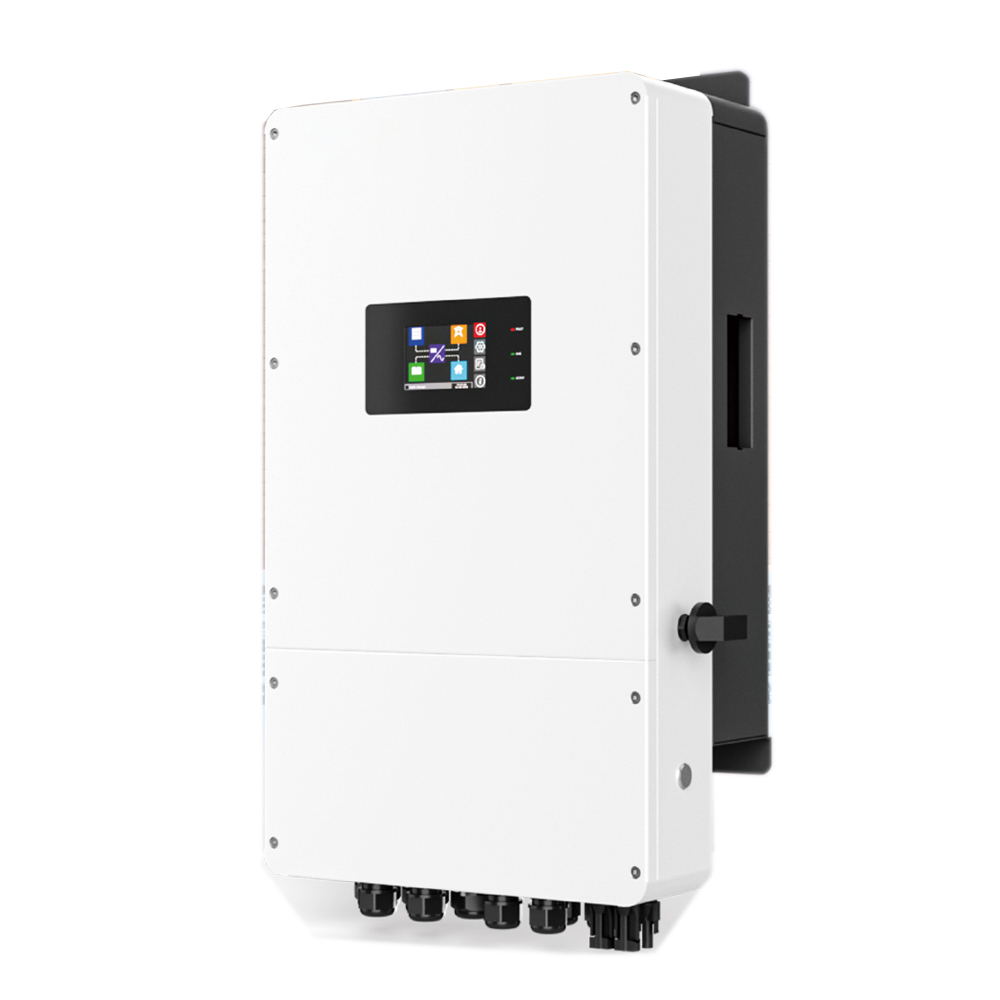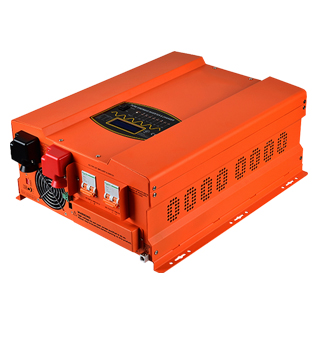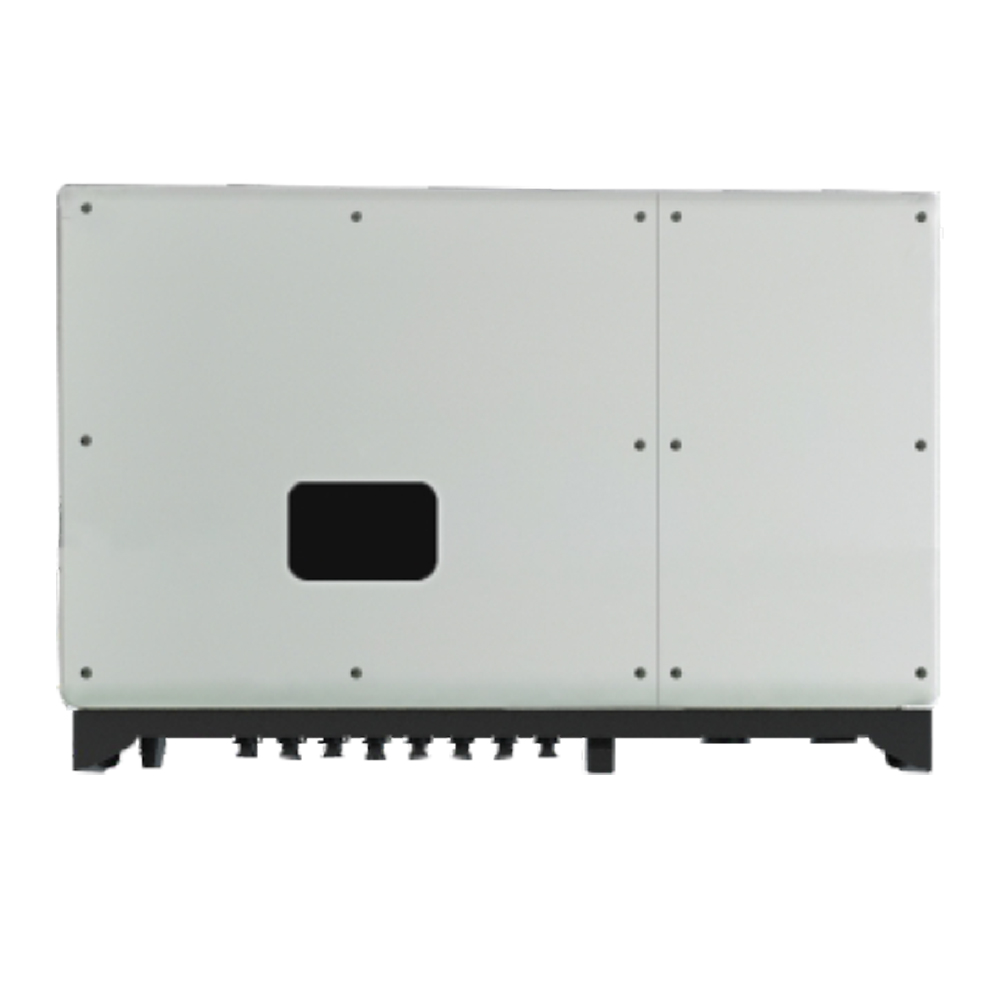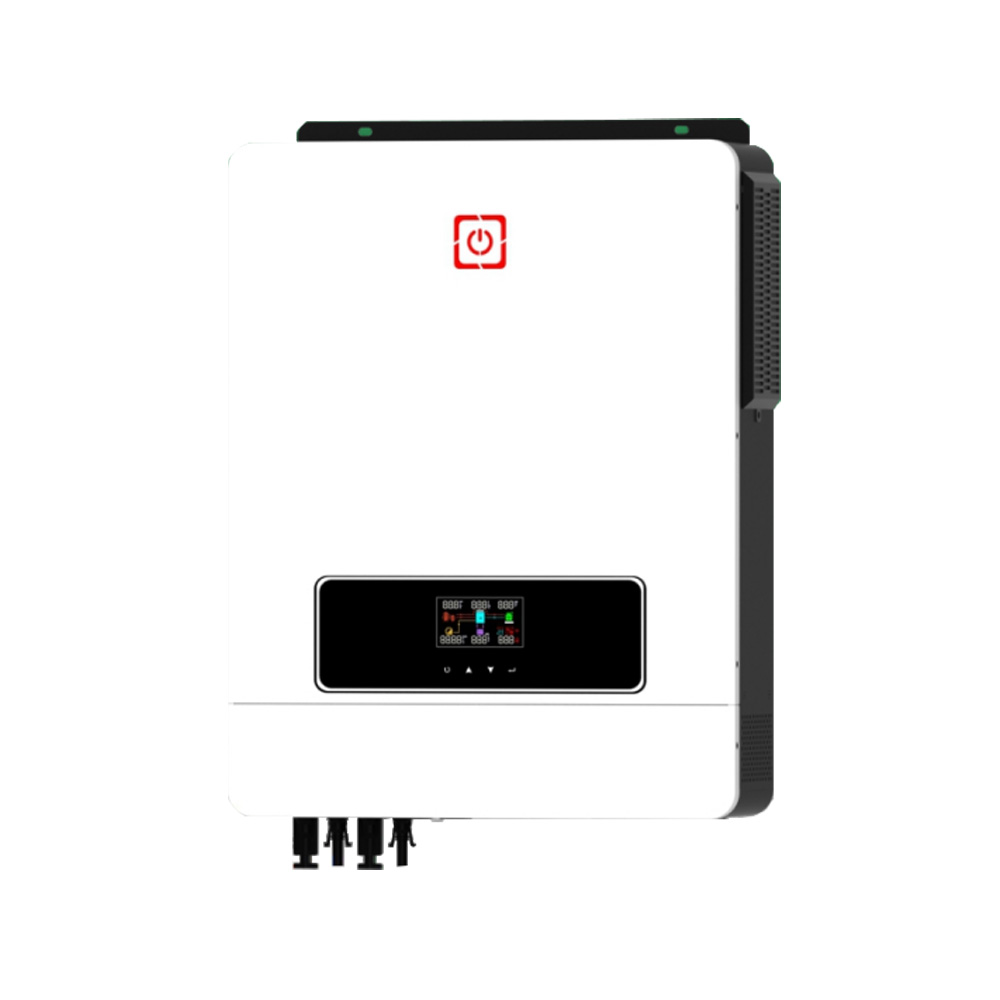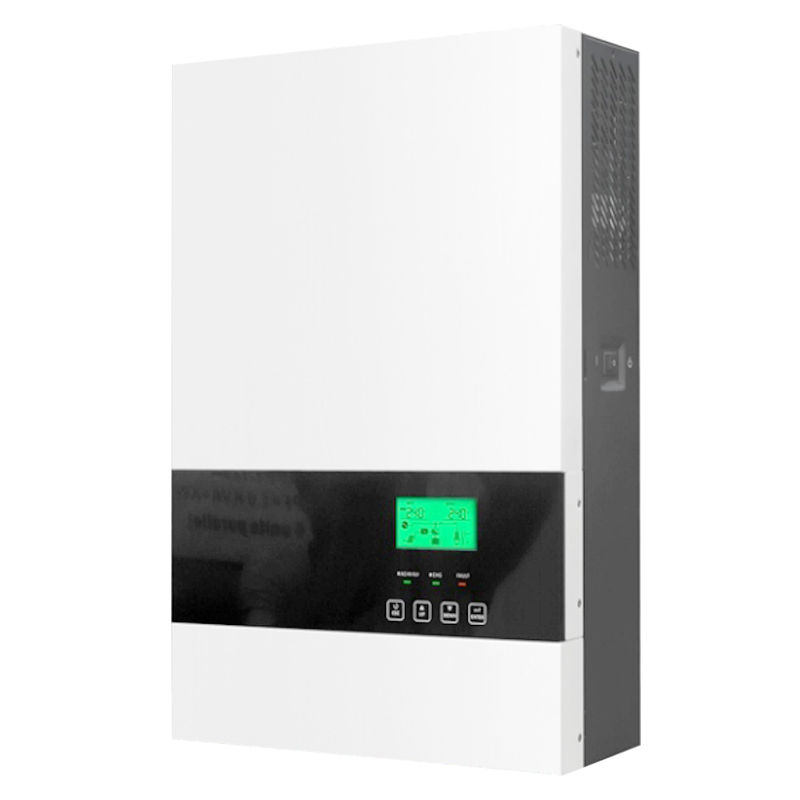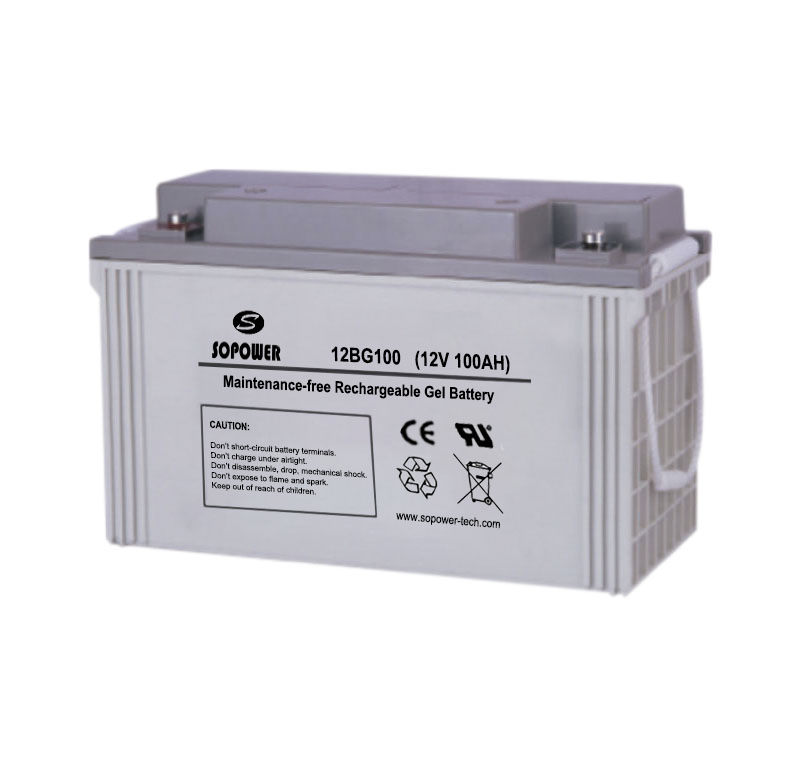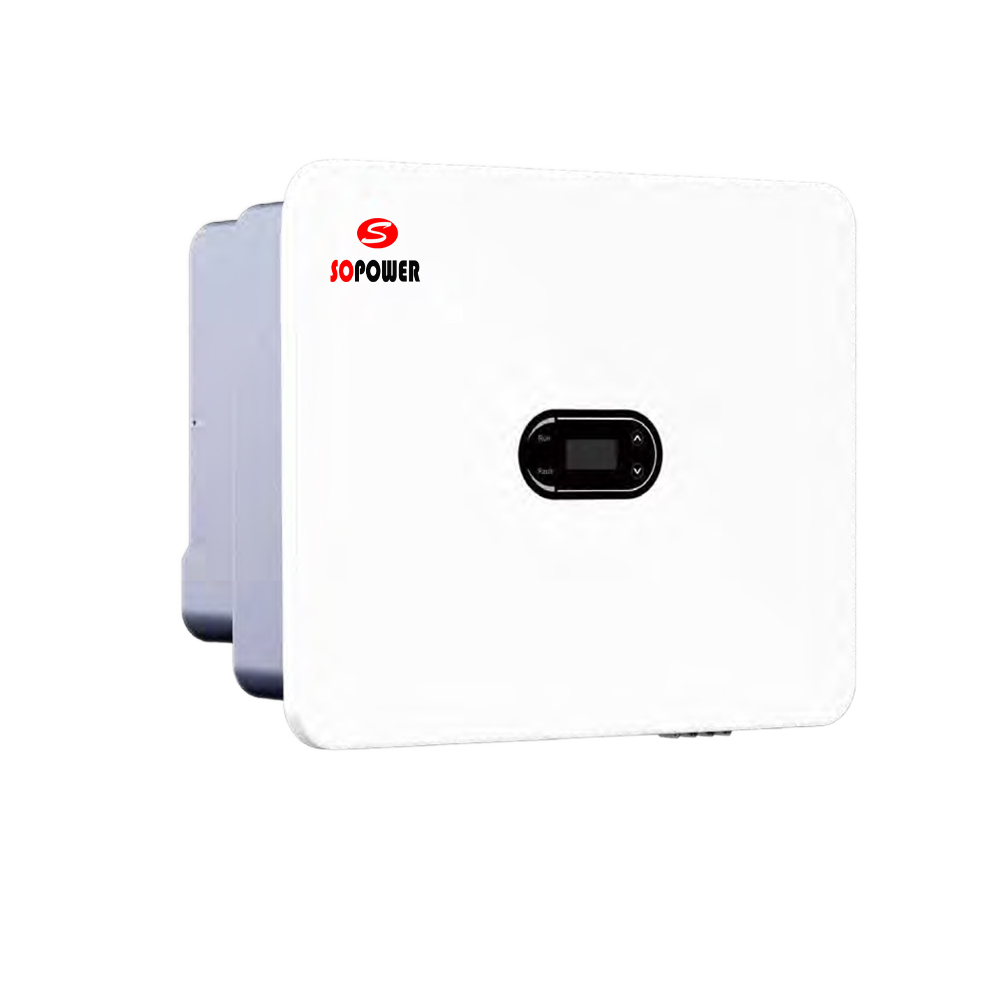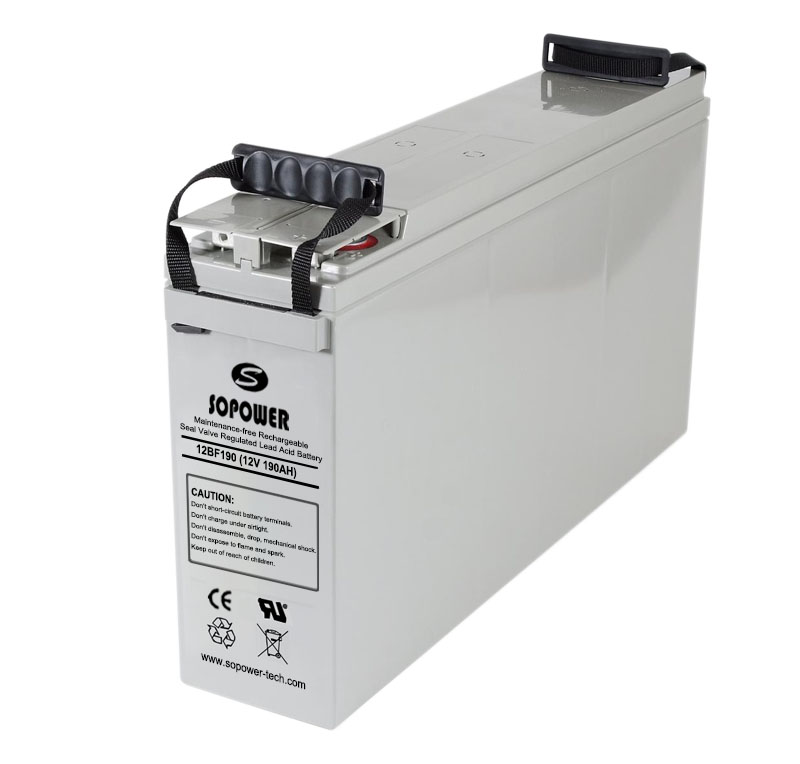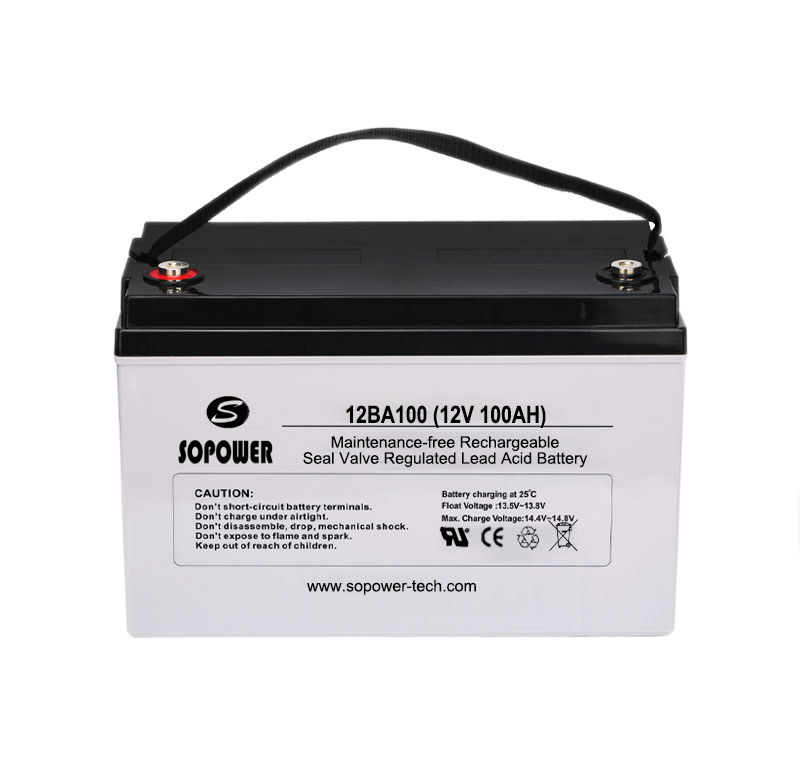By Kathie Zipp | August 21, 2015
Batteries in solar applications have to meet the demands of unstable grid energy, heavy cycling (charging and discharging) and irregular full recharging. There’s a variety of battery types fitted for these unique requirements. Considerations for choosing a battery include cost, cycle life and installation and maintenance.
Here’s a look at these aspects of each technology, as well as some best practices when selecting batteries for a solar installation.
Solar battery technologies

Lead acid
Deep-cycle, lead-acid batteries have been employed in renewable energy and reliably used in off-grid applications globally for decades.
Cost: Typical deep-cycle, lead-acid batteries cost about half as much as lithium-ion.
Cycling: Valve-regulated lead-acid (VRLA) batteries include absorbed glass mat (AGM) and gel models. Many AGMs batteries available in the market are primarily built for dual-purpose or standby applications like emergency backup, but not deep cycling. However, new deep-cycle AGM designs have increased performance and total energy output making them a good choice for renewable energy applications at a lower price point than gel batteries.
Replacement/maintenance: Many factors including initial design and ongoing maintenance influence battery life so it’s difficult to put a time frame on when the batteries will need replacement. Flooded lead-acid batteries have to be refilled regularly because the electrolyte that fully submerges the battery plates evaporates during charging. The battery enclosure needs ventilation to keep hydrogen gas from accumulating to dangerous levels.
AGM and gel technologies, however, are recombinant, meaning they internally convert hydrogen and oxygen into water and do not require maintenance. As there is no free acid inside these batteries, they can be installed in any position other than upside down. Because solar applications can be in hard-to-reach or remote areas, the ability to install the batteries and let them operate over long periods without maintenance is a benefit.
Disposal: Proper disposal of lead-acid batteries is important because they are toxic. Thankfully, the automotive industry organized to recycle lead early on. Plastic containers and covers of old batteries can also be neutralized, reground and used in new battery cases. In some cases, the electrolyte is cleaned, reprocessed and sold as battery-grade electrolyte. In other instances, the sulfate content is removed as ammonium sulfate and used in fertilizers. The separators are often used as a fuel source for the recycling process. Old batteries may be returned to the battery retailer, automotive service station, a battery manufacturer or other authorized collection centers for recycling.
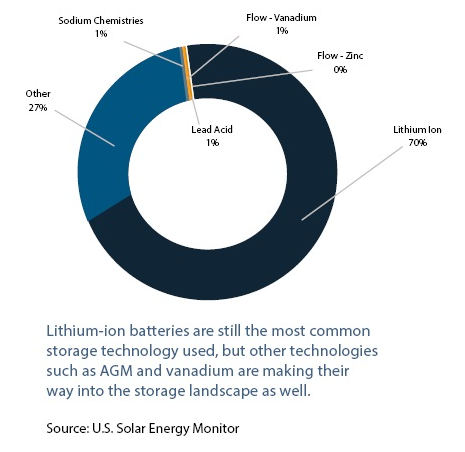
Lithium-ion
According to a U.S. Solar Energy Monitor report, lithium-ion batteries are the most common storage technology, regardless of application. There are three types: pouches such as in smartphones and tablets, cylindrical such as in power tools, and prismatic (which come in various shapes) such as in electronic vehicles. Prismatic types often have corrugated sides, which create air gaps between adjacent cells and can aid in cooling. The prismatic can have applications in solar energy storage, specifically lithium iron phosphate (LFP) batteries.
Cost: Deutsche Bank analysts estimated lithium-ion batteries at about $500/kWh at the end of 2014, but one manufacturer said it’s closer to $750 to $950/kWh. Part of this cost comes from needing a battery management system to monitor the voltage and temperature of each cell to prevent excessive charging and discharging. However, some manufacturers note that, if sized correctly, lithium-ion cells can reduce the cost of peripheral devices like charge controllers, offsetting its higher initial price and lowering cost-of-ownership.
Cycling: Lithium-ion batteries can typically deliver more cycles in their lifetime than lead-acid. This makes them a good choice for applications when batteries are cycled to provide ancillary services to the grid. The most important benefit lithium-ion provides for solar is its high charge and discharge efficiencies, which help harvest more energy. Lithium-ion batteries also lose less capacity when idle, which is useful in solar installations where energy is only used occasionally.
Replacement/maintenance: Lithium-ion batteries can be lighter and more self contained than lead-acid batteries, so may be easier to install and change out. They can be wall-mounted and located indoors or outdoors. They are solid, so don’t require refills or maintenance.
Disposal: Lithium-ion batteries can use organic or inorganic cells. Organic-based batteries are free from any toxins. Inorganic-based cells are much more difficult to dispose of. Inorganic lithium-ion is toxic so it must be disposed of properly. Manufacturers encourage recycling, but there is often a price. Spent lithium-ion cells have little commercial value. Lithium-ion manufacturing involves lengthy preparation and purification of the raw material. In recycling, the metal must go through a similar process again, so it’s often cheaper to mine virgin material than retrieve it from recycling.
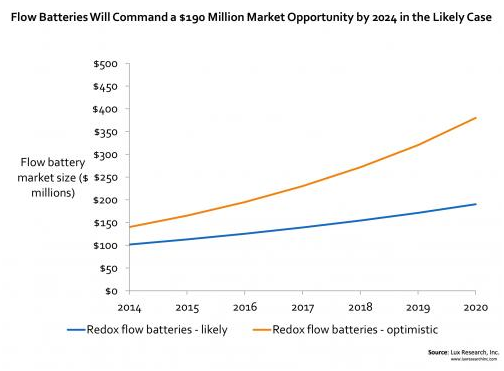
Flow batteries
Redox flow batteries are emerging as another storage option. Lux Research reports that falling costs will lead to a 360-MWh market in 2020, worth $190 million. The vanadium redox flow battery (VRFB) is the most mature technology in this area.
Cost: VRFB developers say that sourcing vanadium from flyash (a by-product of coal-fired electric generating plants) will reduce costs from over $500/kWh to $300/kWh at scale by 2024. VRFB developers are developing ways to boost power density, which will further drive down costs. Integrated power electronics manage the charging and discharging processes, providing a low cost-of-ownership. But the complexity of flow battery chemistry often requires ancillary equipment such as pumps, sensors, control units and secondary containment vessels. This infrastructure takes up appreciable installation space. However, one manufacturer has eased the complexity of ancillary equipment by including all required components within the container itself thereby offering a complete built-in solution.
Replacement/maintenance: VRFB manufacturers note the vanadium electrolyte doesn’t degrade over time, so they can last much longer than other technologies. With other technologies, adding more batteries is the only way to increase hours of storage. A benefit of VRFB architecture is that you can increase battery size by simply adding more electrolyte.
Cycling: VRFB developers say the technology has no cycling limitations, and batteries can be charged and discharged completely without impact on their lifespan.
Disposal: The recycled vanadium in flow batteries is not toxic and can be reused repeatedly for other purposes, such as in making steel. Flow batteries contain an aqueous-based electrolyte that can’t get hot or catch fire and thus are intrinsically safe.
Choosing the right battery
Use a sizing calculator
Battery sizing is essential but often overlooked by users and installers. Batteries in PV systems are routinely undersized due to cost or because the system loads were underestimated. It’s important to know the customer’s power needs and correctly plan. Many online calculators provided by battery manufacturers and other software simplifies determining battery capacity for load requirements.
Consider cost of ownership
There are several factors that should be taken into account when determining the total cost of ownership over the life of the battery.
• Price: A battery with a low price is always attractive, but if low price comes at the expense of quality and battery life, the need for frequent battery replacements could boost the cost over time. That’s why it’s important to consider issues other than price when making the decision.
• Capacity: Battery capacity is important because it’s a measure of the amount of energy stored in the battery.
• Voltage: The battery bank voltage must be considered to ensure it matches the system requirements. The battery bank voltage is often determined by the inverter specifications if installing a DC-to-AC system or by the voltage of the loads in a DC system.
• Cycle Life: The most critical consideration is cycle life, which provides the number of discharge/charge cycles the battery can provide before capacity drops to a specified percentage of rated capacity. Batteries from different manufacturers may have the same capacity and energy content and be similar in weight. But design, materials, process and quality influence how long the battery will cycle.
Battery ratings
The nameplate rating on a battery is the fully developed capacity, so it can be misleading to test a battery immediately after it is purchased because it may take up to 100+ cycles for it to reach its full capacity. Beware of batteries that promise full capacity at the time of purchase or those that reach full capacity after only a few cycles. Batteries with a 100+ cycle warm-up will always outlast those touting a high initial capacity.

